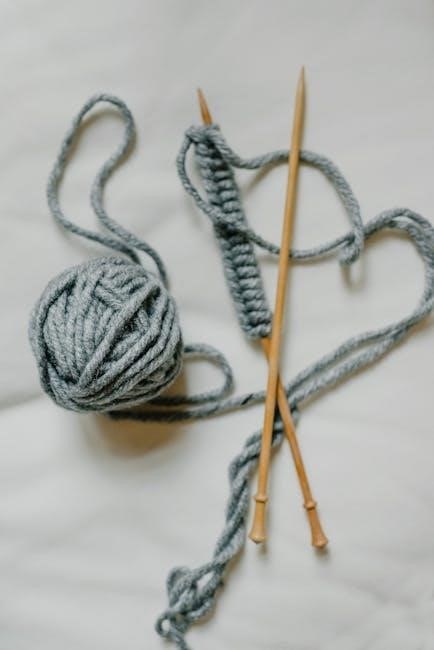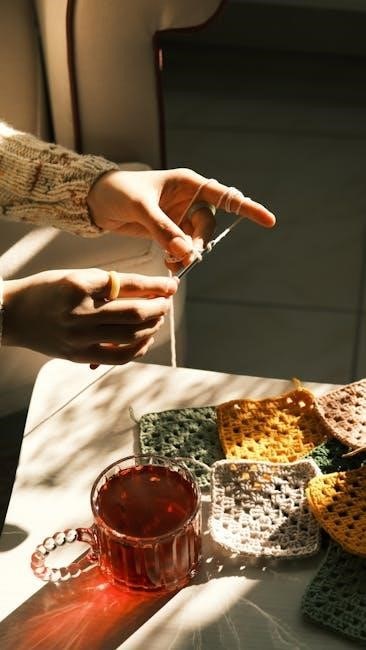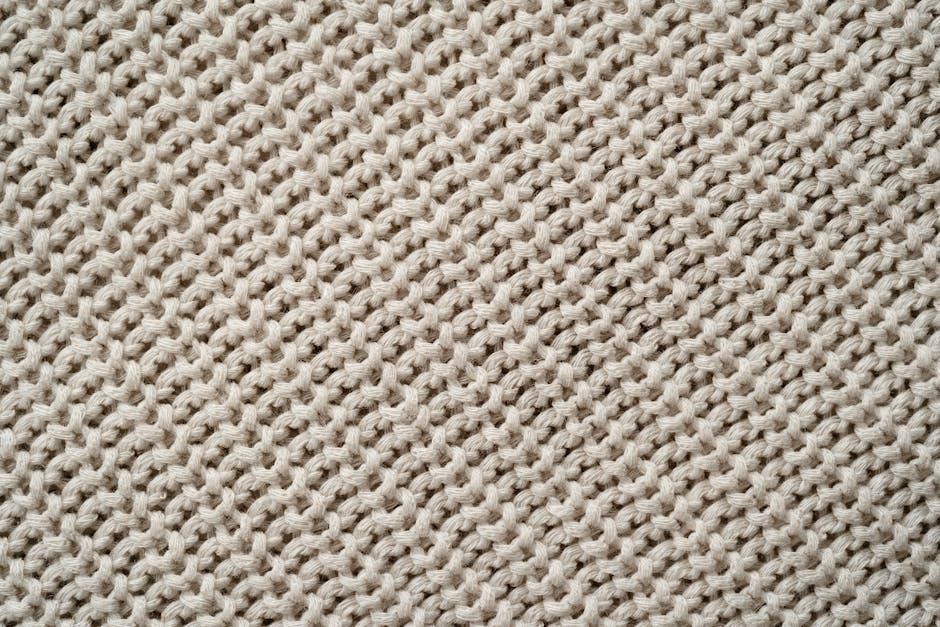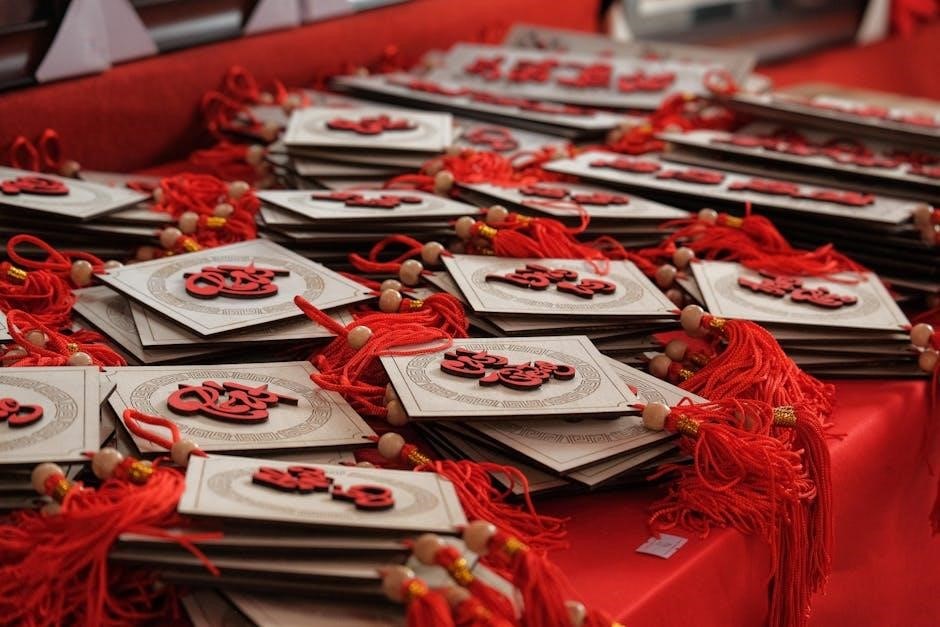Learning about yarn is exciting, with
various topics
to explore, including types and weights, to help you get started on your crafting journey with confidence and creativity always.
Understanding Yarn Basics
To begin with, it is essential to understand the fundamentals of yarn, including its composition, texture, and behavior. This knowledge will help you make informed decisions when selecting yarn for your projects. Yarn is a strand of fibers, which can be natural or synthetic, and is used to create a wide range of textiles. The properties of yarn, such as its softness, durability, and elasticity, are determined by the type of fibers used to make it. Additionally, the way yarn is constructed, including its twist and ply, can also affect its performance and appearance. By grasping these basic concepts, you will be better equipped to navigate the world of yarn and make the most of your crafting experiences. With a solid understanding of yarn basics, you can explore various yarn-related topics, from yarn weight and types to yarn management and joining, and take your crafting skills to the next level. Understanding yarn basics is the foundation upon which all other yarn knowledge is built.

Yarn Weight and Types
Light Weight Yarns
Light weight yarns are a popular choice for crafting, they are known for being versatile and easy to work with, making them perfect for beginners and experienced crafters alike.
They are often used to create garments and accessories that require a bit of drape and texture, such as shawls, scarves, and hats.
Light weight yarns can be made from a variety of fibers, including wool, cotton, and synthetic materials, each with its own unique characteristics and benefits.
Some light weight yarns are also labeled as DK weight or double knitting yarns, which refers to the weight and thickness of the yarn.
These yarns are slightly heavier than fine weight yarns, but still light enough to be used for a wide range of projects.
Overall, light weight yarns are a great choice for anyone looking to create something beautiful and functional, with a soft and gentle texture that is perfect for everyday wear.
They can be used for a variety of techniques, including knitting and crochet, and are available in a wide range of colors and textures.
Light weight yarns are a great addition to any yarn stash, and can be used to create a wide range of beautiful and unique projects.

Yarn Selection and Quality
Choose a yarn that suits your project needs and skill level, considering factors like fiber content and color to ensure the best results always with great quality yarns available.
Choosing a Reliable Yarn Company
A reliable yarn company is essential for any crafter, providing high-quality yarns and excellent customer service. When selecting a yarn company, consider factors such as the variety of yarns offered, color options, and durability. A good yarn company should also provide resources such as pattern guides, tutorials, and tips for crafting. Additionally, look for companies that offer eco-friendly and sustainable options, as well as those that support local communities. By choosing a reliable yarn company, crafters can ensure that their projects are made with the best materials and will last for years to come. Many top yarn companies also offer online communities and forums where crafters can share their projects, ask questions, and get feedback from other crafters. This can be a great resource for those who are new to crafting or looking for inspiration for their next project. Overall, selecting a reliable yarn company is crucial for any crafter.

Yarn Management and Joining
Proper yarn management involves organizing and storing yarn to prevent tangling and mess, using tools like baskets or containers to keep yarn tidy always.
Joining Yarn Without Knots
Joining yarn without knots is a crucial skill for crafters, as knots can come undone when washed or used, causing frustration and ruining projects. To join yarn without knots, one can use the Russian join or spit splicing method, which involves felting the yarn to create a secure join. Another method is to knit with both the end of the previous ball and the beginning of the current ball at the same time for several stitches, creating a seamless join. This technique requires some practice to master, but it is worth the effort to create a professional-looking finish. By using these methods, crafters can avoid the hassle of weaving in ends and create a neat and tidy project. With a little patience and practice, joining yarn without knots can become second nature, allowing crafters to focus on the creatively rewarding aspects of their project. Using these techniques can also help to reduce yarn waste.

Yarn Buying Guide
Read our handy guide to discover brilliant crochet and knitting yarn offers across favorite brands and find new loves to add to your collection with exciting options always available online.
Stocking Your Yarn Stash
Keeping a well-stocked yarn stash is essential for any crafter, as it allows you to start new projects quickly and easily. To stock your yarn stash, consider shopping during sales or discounts, and look for bundles or multipacks that offer a variety of colors and textures. You can also shop online, where you can often find a wide selection of yarns and convenient shipping options. Many crafters also like to stock up on basics, such as neutral-colored yarns that can be used for a variety of projects. Additionally, consider storing your yarn stash in a cool, dry place, away from direct sunlight, to keep it fresh and prevent fading or damage. By stocking your yarn stash with a variety of colors, textures, and types of yarn, you’ll be ready to start your next project at a moment’s notice, and can enjoy the creative process without worrying about running out of yarn. This will help you to be more creative and productive in your crafting journey.
